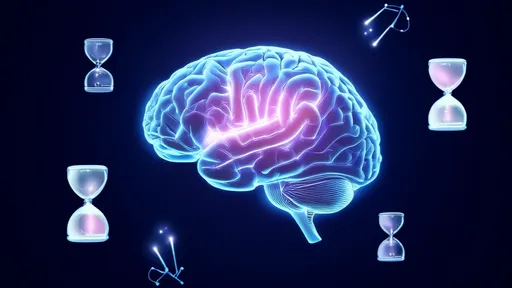Neuroscience is quietly undergoing a paradigm shift as cutting-edge research reveals an astonishing truth – the adult brain remains far more malleable than previously believed. At the center of this revolution lies mindfulness meditation, an ancient practice now demonstrating remarkable capacity to physically reshape our neural architecture. Particularly compelling are the findings showing how structured mindfulness training can significantly improve attention regulation, offering hope for those struggling with attention deficit disorders.
The implications ripple far beyond the meditation cushion. In our hyper-distracted digital age, where the average attention span has plummeted below that of a goldfish, the ability to voluntarily direct and sustain attention has become an endangered cognitive resource. What researchers are now uncovering suggests we may possess an innate ability to counteract this attention crisis through systematic mental training.
Gray Matter Gains: The Neuroplasticity Evidence
Groundbreaking MRI studies conducted at Massachusetts General Hospital and other leading institutions have documented measurable increases in gray matter density following just eight weeks of mindfulness-based stress reduction (MBSR) training. The structural changes appear most pronounced in brain regions intimately involved with attention control – the anterior cingulate cortex and prefrontal cortex. These areas function like the brain's executive control center, governing our ability to focus despite distractions.
Long-term meditators show even more dramatic neuroanatomical differences. Research comparing expert meditation practitioners with matched controls reveals significantly thicker cortical regions associated with sustained attention and sensory processing. The duration of meditation practice correlates strongly with these structural enhancements, suggesting a dose-response relationship between mental training and brain remodeling.
The Attention Regulation Mechanism
Mindfulness cultivates what neuroscientists term "meta-awareness" – the ability to observe the contents of consciousness with detachment. This refined awareness creates what one researcher described as "a pause button" between stimulus and response. Through regular practice, individuals develop enhanced capacity to notice when their attention has wandered and gently return focus to the present moment.
Functional MRI scans reveal how this translates neurologically. During focused attention meditation, practitioners demonstrate reduced activity in the default mode network – the brain system responsible for mind-wandering and self-referential thinking. Simultaneously, they show strengthened connectivity between the executive control network and sensory processing areas. This neural reorganization underlies the improved attentional performance observed in both clinical and non-clinical populations.
Clinical Applications for Attention Deficits
The therapeutic potential for attention disorders is particularly promising. Several randomized controlled trials have demonstrated that mindfulness-based interventions can produce improvements in attention comparable to medication for adults with ADHD, without the side effects. Participants in these studies show enhanced performance on objective attention tasks, along with self-reported improvements in focus and emotional regulation.
Children and adolescents appear to benefit even more profoundly. School-based mindfulness programs report not only better attention spans but also improved academic performance and social skills. The developing brain's heightened plasticity may make younger populations particularly responsive to these interventions. Some forward-thinking schools have begun incorporating brief daily mindfulness sessions with notable success in classroom engagement and behavior.
Beyond the Lab: Real-World Implications
The ramifications extend far beyond clinical settings. In corporate environments, mindfulness training has been shown to reduce multitasking and improve decision-making. Air traffic controllers trained in mindfulness demonstrate superior performance during high-stress scenarios. Even elite athletes are incorporating these techniques to maintain razor-sharp focus during competition.
Perhaps most encouragingly, the benefits appear accessible to everyone. Unlike many cognitive enhancements that require expensive technology or pharmaceutical interventions, mindfulness training is low-cost, scalable, and free from adverse effects. As research continues to validate its efficacy, we may be witnessing the dawn of a new era in cognitive fitness – one where taking time to simply observe one's breath could prove as important for brain health as physical exercise is for the body.
The convergence of ancient wisdom and modern neuroscience offers a compelling message: the mind can train itself to become more focused and present. In a world designed to fragment our attention, cultivating this capacity may be among the most valuable investments we can make in our cognitive well-being.

By /Jul 25, 2025

By /Jul 25, 2025

By /Jul 25, 2025

By /Jul 25, 2025

By /Jul 25, 2025

By /Jul 25, 2025

By /Jul 25, 2025

By /Jul 25, 2025

By /Jul 25, 2025

By /Jul 25, 2025

By /Jul 25, 2025

By /Jul 25, 2025

By /Jul 25, 2025

By /Jul 25, 2025

By /Jul 25, 2025

By /Jul 25, 2025

By /Jul 25, 2025

By /Jul 25, 2025